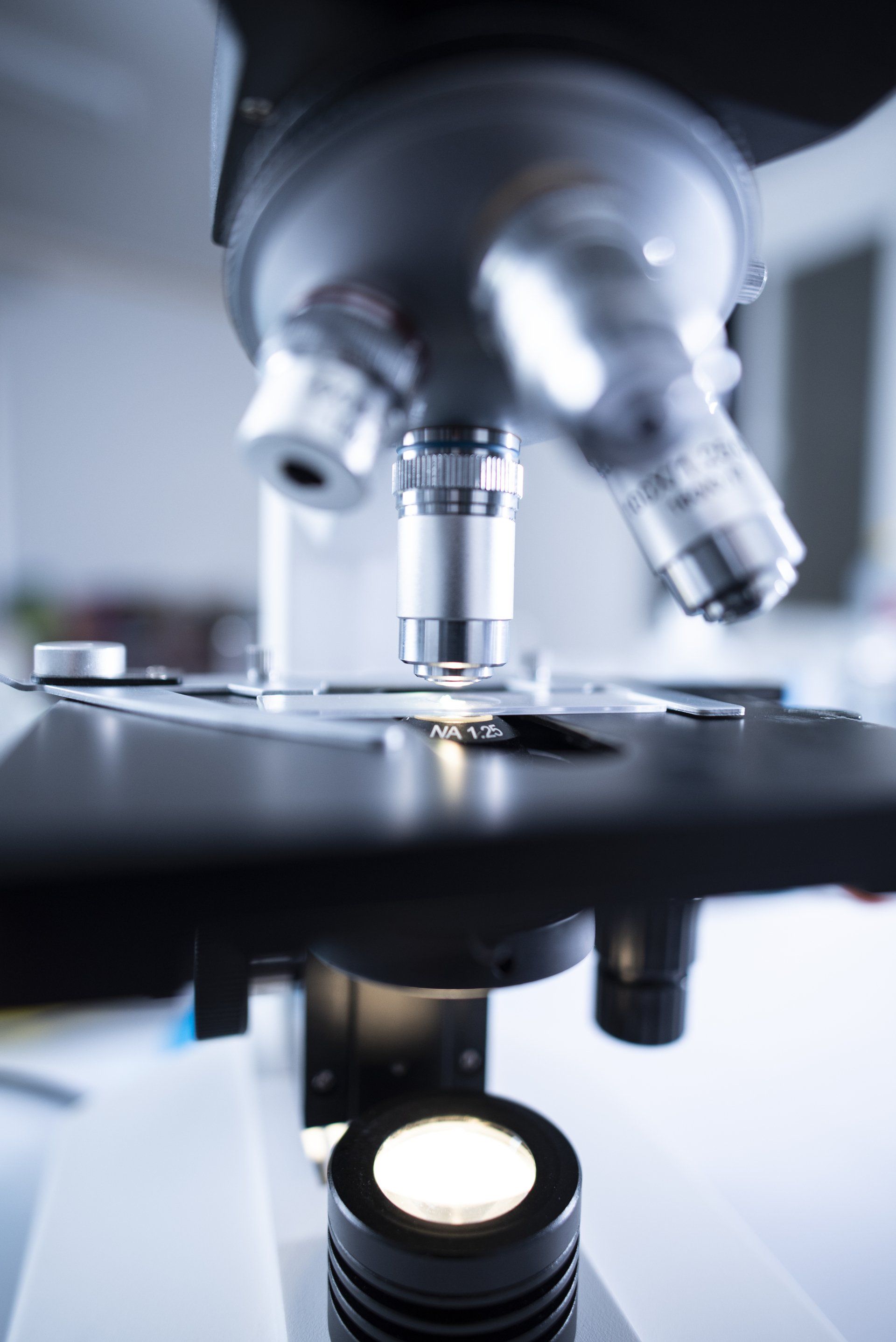5 Signs Of Digestive Problems and How To Heal Them
How Digestive Problems Start
Eating foods that are not appropriate for you, failing to eat based on symptoms or diagnoses, low digestive ability, an imbalance of the microbiome or frank infection of it, lack of integrity of the intestinal lining, a stressed-out Second Brain, and any combination of these factors underpin much chronic digestive distress.
Bloating
Bloating is one of the most common complaints that people report.
Most of us can say that we have felt bloated at one time or another in our lives, but bloating every day, or after every meal, is simply not normal. You should not have to get into a one-sided wrestling match to peel of your jeans at the end of the day, especially if they so smoothly zipped up in the morning.
Figuring out the WHY of bloating will shed good light on HOW to de-bloat.
Avoid gas-causing foods
You may bloat because the foods you eat are inherently gas-causing. Beans, broccoli, cabbage, whey, dairy products, protein powders, protein bars, soy, fructose, FODMAPs, inulin, eggs, fake sweeteners, and sugar alcohols are common culprits to look out for and minimise.
Support your digestive fire
If you’re not producing enough enzymes, acid or bile, bloating is a natural result as food compounds do not get broken down. Enzymes are particularly useful here and be sure to see the section above for a more complete discussion on how to improve your digestive ability.
Chew your food
Eating on the run, scarfing down a sandwich on the way to your car, or slamming down a protein shake standing by the sink doesn’t give your body much time to get into a nice, relaxed state to support optimal digestion. Eating quickly and talking with your mouth full introduces a lot of extra air that eventually must escape. Sit when you eat, slow down, and chew your food until it is a soft paste. This will help decrease gas and bloating and cut down on overeating, too.
Support your microbiome
Rapid bloating after meals is a common symptom of SIBO (small intestine bacterial overgrowth). Bloating that increases during the day and comes with distension is also a sign of SIBO and other forms of dysbiosis. Consider implementing some of the microbiome-boosting strategies, and if those do not help, it’s time to get tested.
Use carminative herbs
Carminative is another way to say gas-reducing. These herbs often are available as tea, singly or in blends. Chamomile, fennel, anise, peppermint, and caraway are all excellent choices, and you can determine which ones you enjoy most. If tea is not your thing, they are available in drops or capsules that can be taken after meals.
Peppermint should not be used by those with GERD, heartburn, or reflux because it can worsen symptoms. For everyone else, it’s wonderful.
Constipation
What is Constipation?
If you have less than three bowel movements per week (some would argue less than one per day), feel as if you are not quite “done” at least 25% of the time, feel as if there is an obstruction at least 25% of the time, if stool is hard 25% of the time, or if you need to use an instrument or enema or some other form of help at least 25% of the time - you’ve got constipation. As with bloating, there are many themes to look at, including the foods you are eating, your ability to digest, the health of your microbiome and the flexibility of your Second Brain. When it comes to tackling constipation and regulating your motility, there are several factors to look at.
Eat more fibre and stay hydrated
When it comes to constipation, fibre can be a tricky issue. One: not all fibres are the same. Two: in many cases, constipation is not the result of a fibre deficiency, and when we begin to load up on Metamucil because our doctor said so, it can slow us down even more, particularly if we are dehydrated! Fibre adds bulk and volume to the stool, which helps our Second Brain push it along and out.
This ONLY works, however, if we are well hydrated. So, if we are indeed fibre-deficient, the very first order of business is to begin to increase our water.
My very favourite form of fibre is the type found in vegetables. If you are getting in non-starchy veggies, you are also getting a bit of water to go alongside your fibre and helping the entire process move right along. Eat at least four cups of vegetables daily, at a bare minimum. Not only are the veggies providing fibre and water, but they are also providing minerals (also key for regularity), vitamins, antioxidants, and a variety of healthy phytochemical. Veggie intake is hugely important. Some are interested in supplemental fibre, and for that, the gentlest one on the block is acacia.
Like probiotics, fibre is something that you want to start at low amounts and slowly increase over time to not exacerbate symptoms. Start with 1/2 teaspoon in 250 ml of water, and every 3-4 days increase this amount by 1/4-1/2 teaspoon until you are doing 2-3 teaspoons in 250-300 ml of water twice daily.
Eat healthy fats
Intake of healthy fats helps keep the bowel lubricated and thus things moving along.
Choosing high-quality fats is of extreme importance, not just for digestion but for overall health and wellness.
In addition to being a lubricant, fats are key for building hormones, cellular communication, and nerve signalling/ transduction.
They are also crucial in the production of the inflammatory and anti-inflammatory compounds your body produces, and you want a correct balance of both for wound healing (to fight infection and to clean up the mess left) and to be able to reduce free radicals and other inflammatory compounds as well.
A mix of fats, of animal and plant origin, is ideal. When it comes to animal fats, buy the absolute best that you can afford, focusing on fish that are wild caught, meats that are grass-fed, and chicken/poultry that is pastured. In the plant kingdom, the easiest and safest options to stick with for cooking are extra virgin olive oil (look for labels that say “100% olive oil” - otherwise you may be getting a blend cut with canola or soy oil), coconut oil and avocado oil.
Oils to stay away from are canola, soy and anything labelled “vegetable oil.” Seed oils are best consumed raw, as in a salad or other veggies. Avocado, nuts and seeds and their butters, coconut and coconut products, egg yolks, fatty fish (salmon, mackerel), and fattier cuts of meat (ribeye, chuck) are all good sources of fats.
Add minerals and electrolytes
Minerals and electrolytes help maintain appropriate hydration levels and help keep the bowel open and flexible so that overall, movements are easy and painless.
Magnesium, potassium, calcium, selenium, sodium, and zinc all work in harmony to achieve this state of fluid balance and open bowel. Veggies and fruits are loaded with electrolytes and minerals, and thus can exert their beneficial effects that way.
Certain medications readily deplete minerals and electrolytes, particularly ones that regulate blood pressure and cardiovascular function, but antibiotics, antidepressants and birth control are culprits too.
A complete mineral complex or a multivitamin that has a multi-mineral complex embedded in it can be beneficial for those who do not or cannot eat a wide variety of veggies or fruits, or for those taking these medications. Try magnesium ascorbate (MA) powder First thing in the morning, drink 250 ml of room temperature water with a squeeze of lemon and 1/4 teaspoon magnesium ascorbate powder. This is a vitamin C powder buffered by magnesium. It is a very gentle laxative and bowel re-trainer, without the risk of dependency like some of the herbal laxatives.
The trick with the MA powder is to find the right dose. If this dose does not stimulate a bowel movement within an hour, slowly increase it by 1/8 teaspoon every several days until you hit the right dose.
Establish a bathroom routine
Your bathroom should be soothing and pleasing to the senses. Using aromatherapy, candles and fun wall coverings, art or paint can all help create a relaxing atmosphere.
Each morning, sit on the toilet and empty your mind.
Focus on your breath.
Sit for 5-10 minutes each morning, whether you have a bowel movement or not.
Bring a small foot stool into the bathroom It doesn’t have to be special or fancy or a Squatty Potty, but as you sit on the toilet, put your feet up on the foot stool.
Your knees should be above the level of the hips.
This puts your anatomy in the right place for a smooth bowel movement. Use the foot stool every single time you sit down for a bowel movement, whether you go or not.
Utilise perineal acupressure daily
Stay with me here. Research suggests that daily perineal acupressure can reduce constipation by up to 80% over a 4-week period. This is an enormous improvement. The acupressure point to press is the space between the anal opening and the genitals (your perineum). As part of your bathroom routine, apply firm but comfortable pressure there for 60 seconds each morning when you are sitting and breathing.
Go for a daily walk
Gentle movement, in the form of a leisurely walk, helps to retrain the Second Brain and the body and is a secret weapon against chronic constipation. The walk should have an element of mindfulness to it. Try to immerse yourself in the sensations: feel the sun and air on your skin, notice the sounds around you. When your mind wanders, bring it back to those immediate sensations. Aim for 30 minutes daily.
Magnesium
Around bedtime, take 400-500mg of magnesium glycerinate This gently helps dilate and retrain the bowel and helps to set you up for a bowel movement in the morning.
You can increase by 200mg every several days until you achieve movement.
Magnesium is very safe to take in high doses, with the worst side effect being loose stool.
Magnesium is good for cardiovascular function, blood pressure, tight muscles, and sleep.
It covers a lot of bases. Pairing magnesium ascorbate powder in the morning with magnesium glycerinate in the evening helps with even the toughest constipation.
Consider triphala in hard cases
This herbal formula (a mixture of three herbs) helps to stimulate both digestive fire and peristalsis.
Diarrhoea
Diarrhoea can be categorised as infectious or non-infectious.
Infectious diarrhoea means you’ve got some pathogen and your body is doing its best to get it out. Infectious diarrhoea typically resolves on its own or is something you receive an antibiotic for.
Antibiotics, of course, can create diarrhoea as well.
Non-infectious diarrhoea implies that there are no pathogens or bad bugs responsible and that there is some other cause.
Diarrhoea can be a predominant symptom of IBS-D, colitis and IBD. As with bloating and constipation, uncovering the reasons why diarrhoea is present will shine the light on how to approach it.
Look at your nutrition, your digestive ability, the health of your microbiome and digestive lining, and most importantly, your Second Brain.
Get a stool test
Any diarrhoea that lasts longer than two weeks deserves a thorough evaluation.
A stool test can rule out frank pathogenic infections like giardia, C. diff, clostridium, and harmful E. coli.
A comprehensive digestive stool analysis (CDSA) can also determine your levels of beneficial bacteria, markers of inflammation, and if you are spilling fats, proteins, or fibres into the stool, all of which will help shape treatment.
Buy non-GMO products
Many researchers are studying the effects of Roundup (glyphosate) on human and bacterial health.
Roundup is typically sprayed on genetically modified, Roundup Ready crops (wheat, sugar, and soy being the most common).
They conducted that Roundup can interfere with the serotonin metabolism and signalling of bacterial cells. Chronic, non-infectious diarrhoea often accompanies high serotonin or serotonin excessive states. Serotonin helps initiate the wave of peristalsis - the muscular contraction that moves food down and out - and diarrhoea is peristalsis gone awry. While the safety of Roundup and GMO crops has not been fully elucidated in humans, chronic diarrhoea sufferers would do well to avoid these items.
Take a probiotic
Probiotics help regulate bowel motility and calm the Second Brain.
They are particularly important if you have taken antibiotics recently or if antibiotics preceded your diarrhoea. Aim for 50-100 billion CFUs of a probiotic that contains Bifidobacterium breve, longum and infantes at a minimum. Consider acacia fibre It’s not just for constipation.
Acacia is very gentle and a great stool binder, helping to add bulk and consistency. Start with 1/2 teaspoon in 250 ml of water, and every 3-4 days increase this amount by 1/4-1/2 teaspoon until you are doing 2-3 teaspoons in 250 ml-300 ml of water twice daily.
Take zinc and zinc carbonise
A zinc lozenge containing 5mg zinc can be taken two to three times daily to help slow you down. Zinc carbonise can alleviate diarrhoea and will also help relieve the local irritation and inflammation that can come with it.
Avoid raw foods, for now
Raw foods are harder for your body to break down and more irritating to the lining of your digestive tract. You may notice more undigested food in the stool when you are eating raw items. Focusing on warm, cooked foods and broths is not only soothing, but broths will help replenish fluids and electrolytes lost from diarrhoea.
Low Stomach Acid Levels
Your stomach acid serves multiple functions. It helps break down protein and absorb certain vitamins and minerals.
Stomach acid acts as defence against bad bacteria and other bugs and viruses that can make you sick and maintains an appropriate pH throughout the entire system. Low stomach acid is most common in those who take acid-blocking medications, the chronically stressed, and the elderly.
Symptoms of low stomach acid include excess belching, bloating, difficulty digesting proteins, anaemia (both iron and B vitamin deficiency), frequent urinary tract, vaginal or upper respiratory tract infections, and reflux.
It is possible to be tested for low stomach acid through the Heidelberg test, although not many doctors perform this test.
Based on your symptoms and your history, your health care provider may recommend a trial of supplemental acid (known as Betaine HCl) taken with meals to see if it improves symptoms. If you have gastritis or an active ulcer, you should NOT take supplemental acid.
Gut Infections/Parasites
You have learned that dysbiosis is a major factor in much chronic digestive distress and has implications for disease not limited to the gut. Sometimes, there is more than just an imbalance present in your microbiome - there is frank infection. A pathogenic bacteria, yeast or parasite is on board. Get a stool test If you suspect an infection, it is imperative that you get a stool test. A GI – MAP (Microbial Assay Plus) test will not only pinpoint which bad guys are present (or if they are not present), it will also determine exactly what pharmaceutical and natural antimicrobials they are sensitive to. It will tell you exactly what you need to kill them, and that saves you a lot of time, money, and guesswork.
Go low-FODMAP
For the course of your treatment, choosing foods that are low on the FODMAP scale will help reduce symptoms of gas, bloating, spasm, cramping, and any motility changes by reducing the levels of fermentation done by your infected gut flora.
Commit to the long haul and gut restoration.
Sometimes infections are easy to treat and are readily knocked out, and sometimes they are not. Anyone experiencing a frank infection should be prepared for 12 weeks of gut-healing practice (focusing on nutrition, improving digestive fire, supporting the microbiome, healing intestinal integrity and de-stressing the Second Brain) in addition to their antimicrobial therapy (even though antimicrobial therapy may not last that long). Some folks choose for both conventional and natural antimicrobials, using the best of both worlds. If you take that approach, natural antimicrobials are typically swapped every 3-4 weeks.
Taking the time to focus on healing your gut knocks out the infection and improves the health of your digestive tract, making relapse or another infection less likely.
Choose antimicrobials that are appropriate for your condition
Your sensitivity test should be the primary way that you determine what antimicrobials to use, whether they are natural or pharmaceutical.
There is good data that demonstrates the efficacy of a variety of plant-based antimicrobials. Grapefruit seed extract, berberine, black walnut, plant tannins, garlic/allicillin, oil of oregano, wormwood and wormseed are examples.
Don’t overlook biofilms.
In chronic infections or in those who relapse regularly, biofilms may be present. Biofilms are a mini fortress that the bad guys build over themselves to protect against your immune system and antimicrobial therapy.
The interlopers group together and use building blocks from your body (calcium, polysaccharides, even metals) to make their fortifications. While it makes them tricky to treat, it simply means you need more tools.
Specific polysaccharide-busting enzymes like glucoamylase, chitosanase, beta-glucanase, cellulase, hemicellulase and pectinase should be used, along with other specific enzymes like lysozyme, protease and peptidase that have DPP-IV activity.
An additional enzyme called serratia peptidase or serrazyme is often used, and the best products will also contain disodium EDTA, which helps remove metal.
There are several products on the market that have these enzymes in them, specifically for biofilms.
Biofilm busters should be taken at the same time as your antimicrobials to enhance delivery.
Conclusion
The number one rule when considering any type of digestive problem, whether it is candida, another type of yeast or parasites or unhealthy bacteria, or SIBO (small intestine bacterial overgrowth), is to test for it.
Stool testing can rule all these things in or out, minus SIBO, which is a breath test.
Do not assume you have an infection and go on an extensive protocol without knowing what is going on. Testing allows us to diagnose and form a treatment plan with effect.
My Office
1160 Toorak Rd Camberwell
VIC, 3124
0415 3111 80
vesna.naturopath@gmail.com
FAQ
-
1. What are the costs of seeing a Naturopath?
First session: 60 minutes - $135
Follow up sessions: 30 minutes - $80.
-
2. Do you take both male and female clients?
Yes, Everyone is welcome.
-
3. How long will my treatment take?
Treatments vary case by case. There's no cookie cutter approach here. It really depends on your ailment and what I am treating you for. Could be as little as a week - some treatments are ongoing. Best to message me directly and have a chat.
-
4. Do I have to test before I get a treatment?
Again this varies case by case.
For severe cases and stomach issues I always recommend testing so that the results give us a clear outline of what the root issue is and roughly how long it will take to fix.
When we don't run appropriate tests we are just throwing things at the wall and hoping that they stick - Knowledge = Results.
-
5. Can you treat SIBO?
Yes SIBO is very treatable.
More and more cases of SIBO are becoming common because of the procsessed foods we ingest and the rapid intake of antibiotics. Furthermore the stress of day to day life loaded with the stress of technology and social media compounds and usually results in some kind of inbalance in your stomach flora.
-
6. What's involved in my initial consultation?
In your initial consultaiton we go over your lifestyle, dietary habits, sleep - basically break down your day lifestyle factors and nutritional intake.
We speak about your symptoms and outline your health goals.
The first consultaiton usually lasts for roughly around 60 minutes to go through everything.
After the first consult you will know whether we need to do further testing to make a diagnoses.
-
7. What kind of tests do you do?
GI Map Testing
This test is conducted to diagnose problems with the gut.
The test is designed to assesses your microbiome, as well as immune and digestive markers, from a single stool sample.
This test identifies pathogenic and beneficial
(commensal) bacteria, along with opportunistic pathogens, parasites, fungi, and viruses, using new
technology mainly multiplex, automated, DNA analysis.
Hair Tissue Mineral Analysis
Other lab tests can provide very valuable information such as what foods we are allergic to, the stateof our gut, if we have infections, or if our hormone levels are up to par.
With HTMA, we have something extremely powerful.
From one strang of hair, the test will tell us whether youy're pre-diabetic, depressed, immuno comprimised or if you have too much aluminion that is impacting brain health and cognitive function.
HTMA uses a small hair sample to get up to 3 months of information on the status of your mineral ratios and heavy metal toxicity which gives us insight into what is throwing the body off-balance.
The hair is the ideal testing mechanism because it shows a cumulative pattern of health information
that is safe and non-invasive in nature.
It reveals health data far more accurate than urine or blood sample.
-
8. What methods will you use to treat me?
Varies greatly depending on your ailments and lifestyle factors.
The first step is to establish diagnosis.
Once we do that I use a combination of lifestyle factors (Nutrition / Sleep / Exercise) and Herbal Supplements.
Let's Talk
Simple changes get results. You don't have to live your life always reacting to foods with no energy and low libido.
Subscribe to my mail list to get the latest news on herbs, supplements & health tips. No Spam, I promise.
Contact Us
We will get back to you as soon as possible.
Please try again later.



